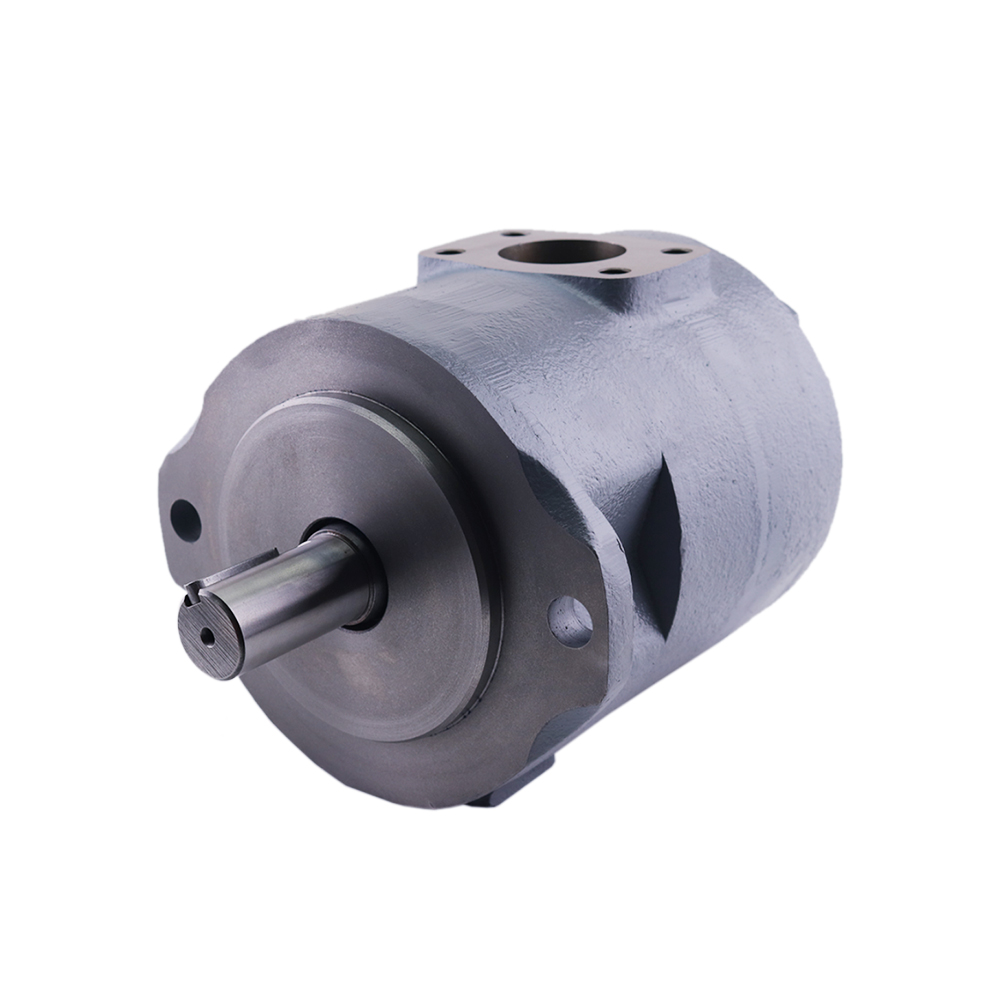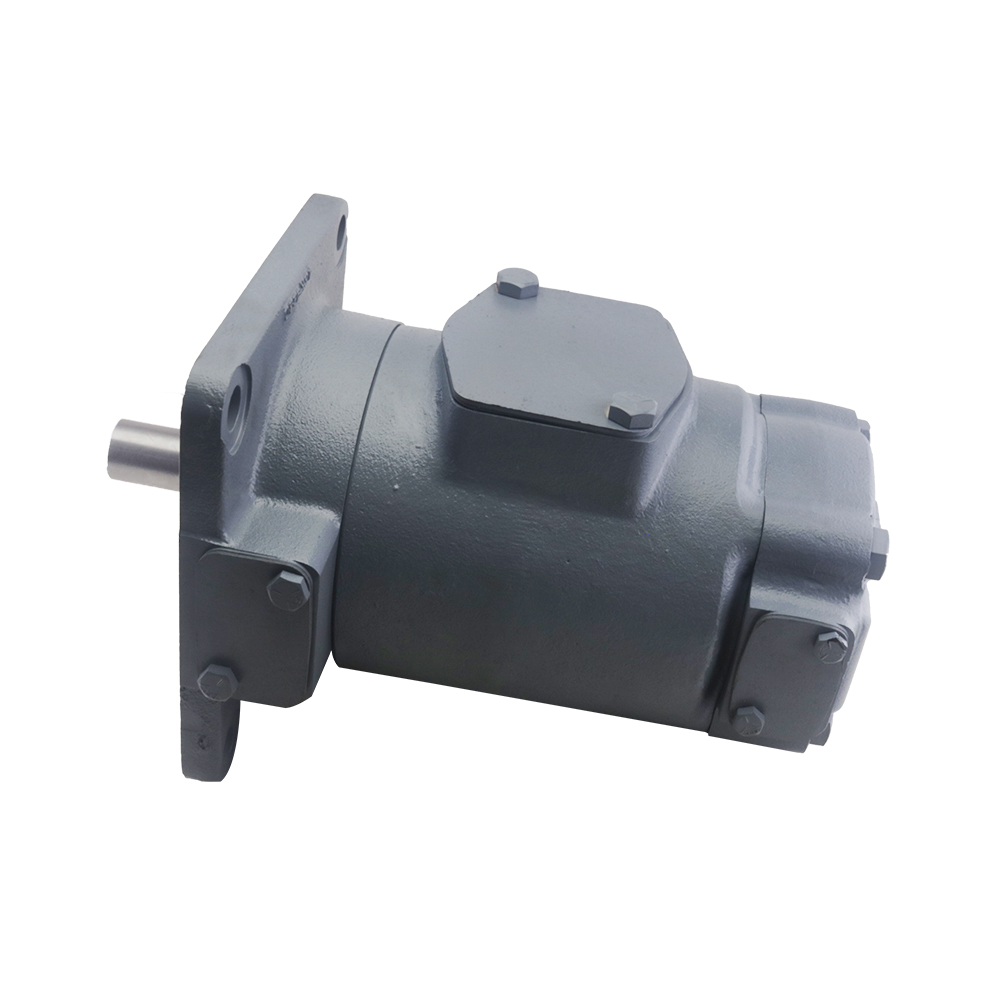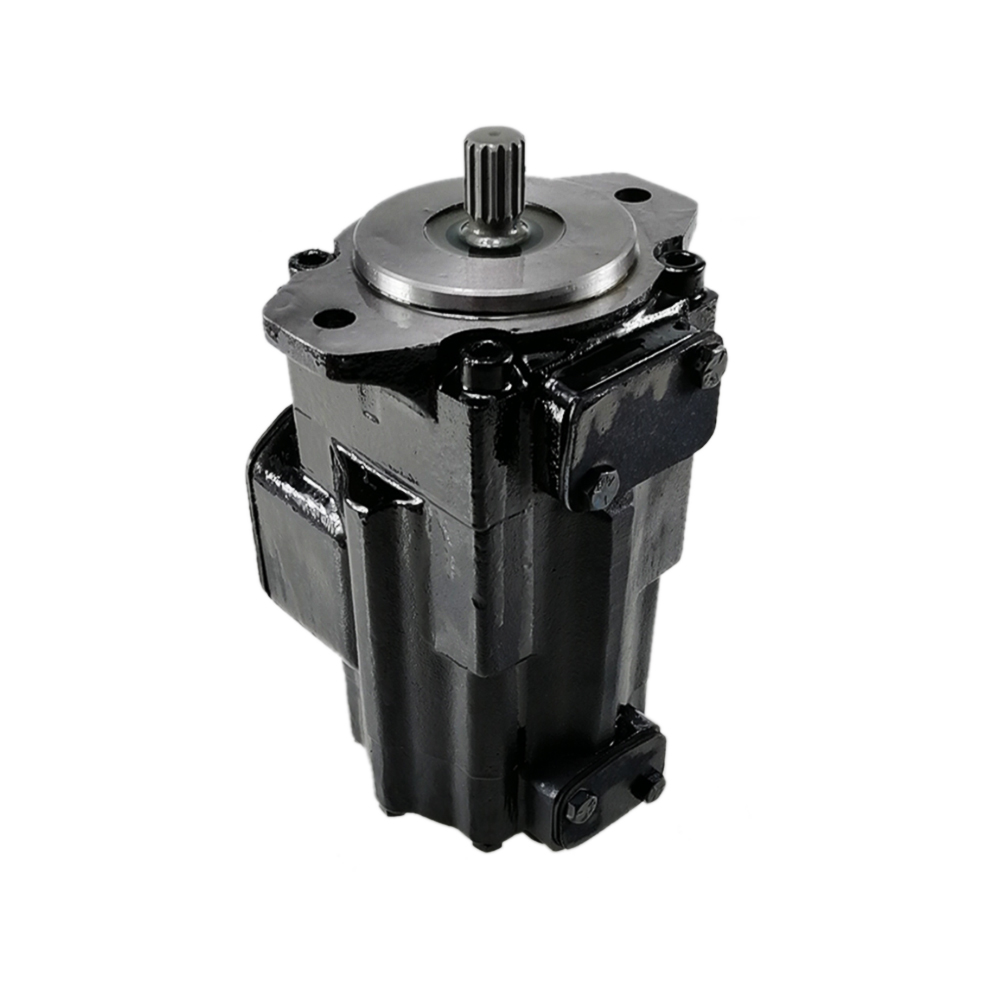Understanding Vane Pump Shafts
1. Overall analysis of parts
The vane pump realizes the oil suction and oil pressure of the pump by the volume change of the closed volume formed by the rotor, the stator, the vane and the oil distribution plate. The structure of the vane pump is compact, and the machining precision of the parts is required to be high. When the vane pump rotor rotates, the tip of the vane clings to the inner surface of the stator under the action of centrifugal force and pressure oil. In this way, the working volume formed by the two blades, the rotor and the inner surface of the stator first absorbs oil from small to large and then discharges oil from large to small. When the blades rotate for one revolution, oil suction and oil discharge are completed twice. The pump shaft is subject to torsional and bending fatigue during work, and is subject to wear at the splines and journals. Therefore, the shaft is required to have high strength, good toughness and wear resistance.
2. Service conditions
The pump shaft is one of the main parts of the vane pump, which mainly transmits power. When working, the high-speed rotating bearing is subject to various loads such as bending, torsion and impact.

3.Failure form
The main failure mode of the vane pump shaft is fatigue fracture, and the wear, bite, or even bite of the working surface may occur at the spline and journal.
4. Performance requirements
The main performance requirement of the vane pump shaft is that the shaft has high strength, good toughness and wear resistance, so as to ensure that the shaft can work for a long time under good service conditions.

5. Determine the processing route (cold and hot processing)
The overall processing process of the vane pump shaft: blank→quenching and tempering→inspection→primary machining (3~5mm for rough turning)→high-frequency induction heating and quenching→inspection→tempering→inspection→secondary machining (finishing) The amount of fine grinding left in processing is 0.15~0.25mm)→grinding→finished product.
The processing technology mainly includes machining and heat treatment processes. Machining refers to the processing technology of precisely removing materials through processing machinery. It directly changes the shape, size and surface quality of the blank, and the process of making it into a part is called the machining process. Heat treatment is a metal thermal processing process in which metal materials are heated, kept warm, and cooled in a certain medium, and their properties are controlled by changing the metallographic structure on the surface or inside of the material.
The structure of the part is simple, the blank can be modulated first, and then shaped by machining; then high-frequency induction heating and quenching is carried out to reach the required hardness of the surface, and then tempered; the cutting performance is improved and then machined to make it Composite size requirements; Finally, after grinding to meet the dimensional accuracy, the required parts can be obtained.

